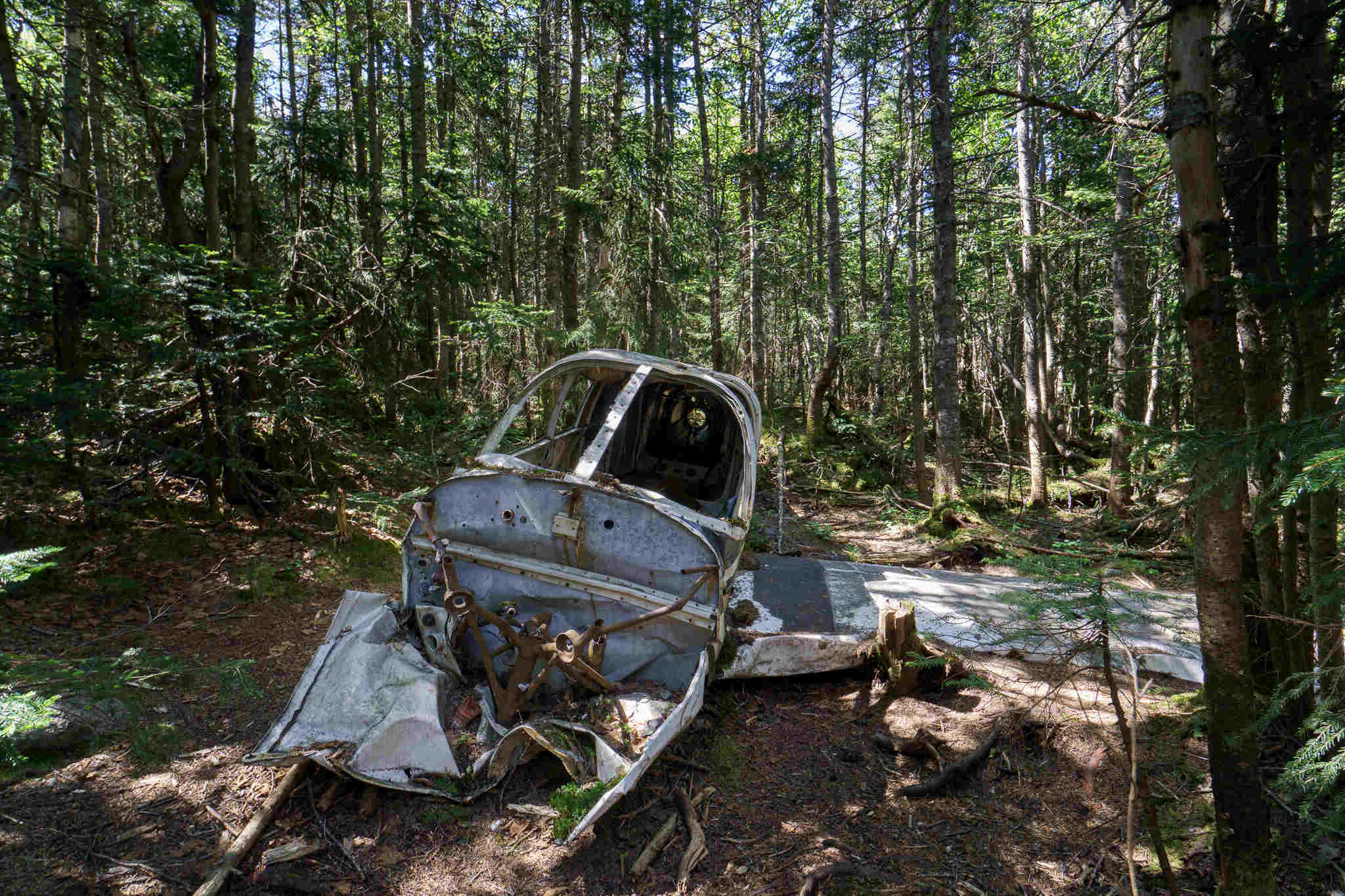
On November 14, 1970, a tragic event shook the world of college sports and aviation. Southern Airways Flight 932, carrying the Marshall University Thundering Herd football team, crashed into a hillside near Tri-State Airport in West Virginia. All 75 people on board perished, including players, coaches, and supporters. This disaster not only devastated the Marshall community but also led to significant changes in aviation safety protocols. The crash's impact is still felt today, with annual ceremonies and memorials honoring the victims. This article delves into the details of the crash, its causes, and its lasting legacy on both Marshall University and the nation.
Key Takeaways:
- The Marshall plane crash in 1970 was a tragic event that led to significant changes in aviation safety, impacting the nation and the Marshall University community.
- Despite the tragedy, Marshall University showed resilience by rebuilding its football program, and the crash remains a reminder of the importance of safety measures and community strength.
The Tragic Event
The Marshall plane crash remains one of the most heartbreaking moments in American sports history. On November 14, 1970, Southern Airways Flight 932, carrying the Marshall University Thundering Herd football team, crashed, leaving a lasting impact on the community and the nation.
- The crash occurred at 7:36 p.m. on November 14, 1970.
- The crash site was about 5,543 feet west of runway 11 (now runway 12) at Tri-State Airport in Kenova, West Virginia.
- Southern Airways Flight 932 was a chartered Douglas DC-9 jet.
- Onboard were 37 members of the Marshall University football team, 8 coaching staff, 25 athletics boosters, 2 pilots, 2 flight attendants, and a charter coordinator, totaling 75 people.
- The National Transportation Safety Board (NTSB) concluded the probable cause was descent below Minimum Descent Altitude (MDA) during a non-precision approach under adverse conditions, without visual contact with the runway.
The Causes and Consequences
Understanding the reasons behind the crash helps in grasping the gravity of the situation and the subsequent changes in aviation safety.
- Pilot error was a significant factor, as the pilots failed to maintain the correct altitude, leading to the crash.
- Water seepage into the plane's altimeter could have caused incorrect height readings, making the pilots believe the plane was higher than it was.
- The plane collided with the tops of trees on a hillside during its final approach, bursting into flames and creating a charred swath 95 feet wide and 279 feet long.
- The plane came to a stop 4,219 feet short of the runway and 275 feet south of the middle marker.
- The remains of six passengers were never identified due to the severe damage.
Investigation and Safety Improvements
The aftermath of the crash led to significant investigations and recommendations to improve aviation safety.
- The NTSB issued its final report on April 14, 1972, detailing the probable cause and contributing factors.
- Recommendations included the installation of heads-up displays, ground proximity warning devices, and surveillance and inspection of flight operations.
- These recommendations led to the installation of Ground Proximity Warning Systems (GPWS) in most commercial aircraft, reducing the risk of similar accidents.
Impact on Marshall University
The crash had a profound impact on Marshall University, almost leading to the disbandment of its football program.
- The Marshall University football team was returning from a 17-14 loss to the East Carolina Pirates in Greenville, North Carolina.
- Among those who perished was coach Frank Loria, a College Football Hall of Fame member.
- The university honored the victims with various memorials, including a granite cenotaph at Spring Hill Cemetery in Huntington, West Virginia.
- Memorials include a plaque and memorial at Fairfield Stadium, a Memorial Fountain at the Memorial Student Center, and a bronze sculpture called the "We Are Marshall Memorial Bronze" at the Joan C. Edwards Stadium.
- The road between the stadium and Spring Hill Cemetery was renamed Marshall Memorial Boulevard.
Annual Remembrance and Hollywood Tribute
Every year, Marshall University and the community come together to remember the victims of the crash.
- Every year on the anniversary of the crash, Marshall holds a ceremony honoring the victims, turning off the Memorial Fountain during the ceremony.
- The tragic event was immortalized in the movie "We Are Marshall," chronicling the fallout and reformation of the football program.
- The East Carolina Pirates' home stadium guest entrance also commemorates the event with a plaque, honoring the victims.
Aviation Industry Impact
The crash led to significant changes in aviation safety protocols, highlighting the importance of ground proximity warning systems and other safety measures.
- The crash led to the installation of Ground Proximity Warning Systems (GPWS) in most commercial aircraft.
- The recommendations made by the NTSB following the investigation have had a lasting impact on the industry, reducing the risk of similar accidents.
Rebuilding Marshall Football
Despite the tragedy, Marshall University worked hard to rebuild its football program, showing resilience and determination.
- After the crash, Marshall University named Jack Lengyel from Wooster College as the new football coach.
- The NCAA granted special permission for freshmen to play on the varsity team, along with walk-ons and nine players who did not make the flight.
- In 1971, Marshall lost its first game of the season on the road but won its first home game since the crash against Xavier University 15-13.
Long-Term Impact and Legacy
The crash had a lasting impact on the nation, particularly in West Virginia, and remains one of the deadliest aviation accidents in U.S. history.
- The crash is etched in American sports history as the deadliest tragedy to affect a single sports program.
- Every November 14th, the nation remembers the 75 lives lost in the crash with ceremonies and tributes.
- The road between the Joan C. Edwards Stadium and Spring Hill Cemetery was renamed Marshall Memorial Boulevard.
- A bronze sculpture called the "We Are Marshall Memorial Bronze" was dedicated on November 11, 2000, three days before the 30th anniversary of the crash.
- The Memorial Fountain was dedicated on November 12, 1972, and is turned off during a ceremony every year to honor the victims.
Community Healing and Historical Significance
The community came together to heal and remember the victims, highlighting the resilience and solidarity of the people affected.
- The community immediately went into mourning following the crash, supporting each other through the tragic event.
- The crash occurred during a time when air travel was becoming more common, but safety measures were not as stringent as they are today.
- The crash was met with national shock and grief, described as "the worst sports-related air tragedy in US history."
- After the crash, Marshall University faced significant challenges in rebuilding its football program but recovered with the support of the community and dedication of new coaches.
- Despite the tragedy, the Marshall football program has continued to thrive, experiencing many successes over the years.
- The Marshall plane crash will always be remembered as a tragic event that had a profound impact on American sports history, serving as a reminder of the importance of safety measures and the resilience of communities in the face of tragedy.
Remembering the Marshall Plane Crash
The Marshall plane crash on November 14, 1970, remains one of the most tragic events in American sports history. It claimed 75 lives, including 37 members of the Marshall University Thundering Herd football team, coaches, and supporters. The crash's cause was attributed to pilot error and altitude issues, leading to significant changes in aviation safety protocols.
Marshall University faced immense challenges but chose to rebuild its football program, honoring the victims with various memorials. The annual ceremonies and the movie "We Are Marshall" keep the memory alive. This tragedy not only impacted the university but also led to improvements in aviation safety, ensuring such an event is less likely to happen again. The resilience shown by the Marshall community serves as a powerful reminder of the strength and unity that can emerge from even the darkest times.
Frequently Asked Questions
Was this page helpful?
Our commitment to delivering trustworthy and engaging content is at the heart of what we do. Each fact on our site is contributed by real users like you, bringing a wealth of diverse insights and information. To ensure the highest standards of accuracy and reliability, our dedicated editors meticulously review each submission. This process guarantees that the facts we share are not only fascinating but also credible. Trust in our commitment to quality and authenticity as you explore and learn with us.


